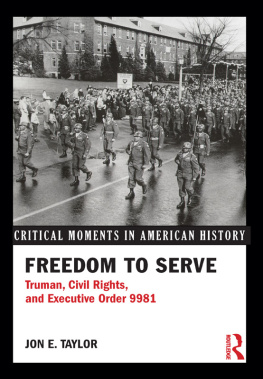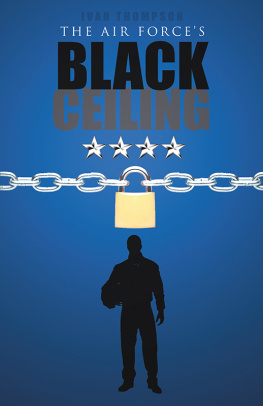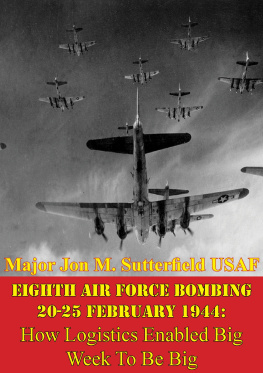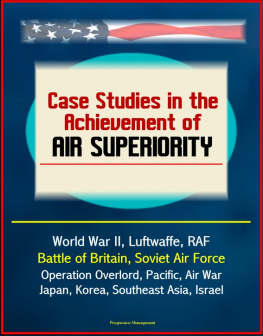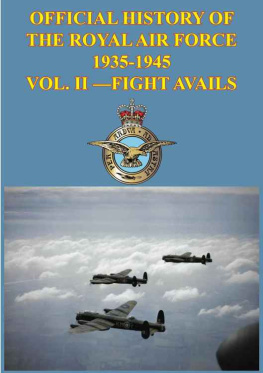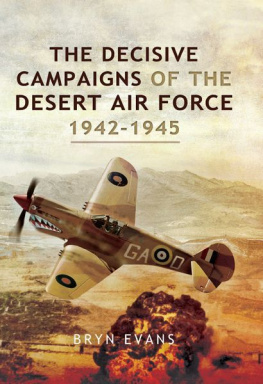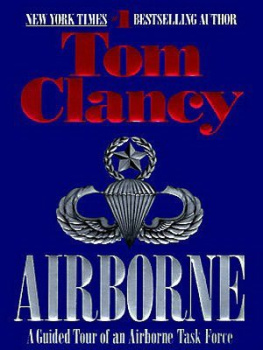The Air Force Integrates - 1945-1964 - World War II, Freeman Field Mutiny, MacDill Riot, Unbunching, Eisenhower, Little Rock, Kennedy Era and the Civil Rights Act, Travis Riot, Blacks in USAF
* * * * * * * * * * * *
U.S. Government, U.S. Military, Department of Defense (DoD), U.S. Air Force (USAF)
* * * * * * * * * * * *
Progressive Management
Questions? Suggestions? Comments? Concerns? Please contact the publisher directly at
Remember, the book retailer can't answer your questions, but we can!
* * * * * * * * * * * *
This is a privately authored news service and educational publication of Progressive Management. Our publications synthesize official government information with original material - they are not produced by the federal government. They are designed to provide a convenient user-friendly reference work to uniformly present authoritative knowledge that can be rapidly read, reviewed or searched. Vast archives of important data that might otherwise remain inaccessible are available for instant review no matter where you are. This e-book format makes a great reference work and educational tool. There is no other reference book that is as convenient, comprehensive, thoroughly researched, and portable - everything you need to know, from renowned experts you trust. For over a quarter of a century, our news, educational, technical, scientific, and medical publications have made unique and valuable references accessible to all people. Our e-books put knowledge at your fingertips, and an expert in your pocket!

* * * * * * * * * * * *
CONTENTS
* * * * * * * * * * * *
* * * * * * * * * * * *
* * * * * * * * * * * *
Alan L. Gropman
OFFICE OF AIR FORCE HISTORY
UNITED STATES AIR FORCE
WASHINGTON, D.C.
1985
SPECIAL STUDIES
FOREWORD
This book describes the struggle to desegregate the post-World War II U.S. Army Air Forces and its successor, the U.S. Air Force, and the remarkable advances made during the next two decades to end racial segregation and move towards equality of treatment of Negro airmen. The author, Lt. Col. Alan L. Gropman, a former Instructor of History at the U.S. Air Force Academy, received his doctorate degree from Tufts University. His dissertation served as the basis for this volume. In it, the author describes the fight to end segregation within the Air Force following President Harry S. Truman's issuance of an executive order directing the integration of the armed forces. Despite resistance to this order, fueled by heated segregationist opposition, integration moved ahead somewhat slowly under the administration of President Dwight D. Eisenhower. Progress increased during the administration of President John F. Kennedy, which saw major advances toward achieving equality for Negro servicemen.
Colonel Gropman's study is a detailed, comprehensive, and, in many respects, a documentary account. The crucial events it describes more than justify the unusually extended treatment they receive. The volume thus provides a permanent record of this turbulent period in race relations and constitutes a significant contribution to the history of the Air Force.
JOHN W. HUSTON
Maj. Gen. USAF
Chief, Office of Air Force History
Washington, D.C.
4 December 1977
* * * * * * * * * * * *
U.S. AIR FORCE ADVISORY COMMITTEE (As of September 1975)
Dr. I. B. Holley, Jr.
Duke University
Lt. Gen. James R. Allen
Superintendent, USAF Academy
Dr. Robert F. Byrnes
Indiana University
Lt. Gen. Albert P. Clark
USAF (ret.)
Dr. Henry F. Graff
Columbia University
Dr. Forrest C. Pogue
Director, Dwight D. Eisenhower Institute for Historical Research
Mr. Jack Stempler
General Counsel, USAF
Chief, Office of Air Force History
Maj. Gen. John W. Huston
Chief Historian
Stanley L. Falk
Deputy Chief Historian
Max Rosenberg
Chief, Histories Division
Carl Berger
Senior Editor
Lawrence J. Paszek
* * * * * * * * * * * *
PREFACE
In 1945 the U.S. Army Air Forces (USAAF) was a racially segregated institution whose personnel policies were dominated by prejudices inherited from earlier decades. By 1964, however, its successor, the United States Air Force (USAF) had officially ended all forms of racial segregation and undertookas did its sister servicesto end all forms of discrimination on-and-off-base. This narrative concentrates on the Air Force's evolutionary development away from segregation and towards equal opportunity.
To establish a base from which post-World War II Air Force progress may be measured, I analyzed two key elements. First, I examined the military writings of the interwar period (1919-1939) which debated the best uses of Negro soldiers. Second, I studied the USAAF's wartime treatment of a mutiny of Negro officers which took place in April 1945 at Freeman Field, Ind. Having obtained the use of recently declassified telephone transcriptions involving discussions between AAF military leaders in the spring of 1945, as well as other documentation, I was able to focus on the racial biases of the officer corps.
Once their views were clearly established, I traced the slow and uneven development of the AAF's policy from an April 1945 Negro officer mutiny to the success of the equal opportunity program which followed the civil rights movement of the 1960's. Although there were signs of positive change in military racial attitudes at the end of World War II, the desire for racial equity was not sufficiently deep-seated nor widely held by senior military leaders to break the pattern of segregation. The Army Air Forces, when confronted with one massive and several minor race incidents in 1946 and 1947, persistently sought to blame Communist influences as the source of the unrest among Negro servicemen, while overlooking other factors such as overcrowded living conditions and the maintenance of racial segregation.
A handful of senior Air Force officers recognized the causal relationship between segregation and the disturbances and, more significantly, they were aware that segregation was an inefficient personnel policy. When desegregation finally came to the Air Force in May 1949, it was a product of military pragmatism combined with the demands of U.S. presidential politics. A few key farsighted individuals in the Air Force in early 1948 had sought to disband the single all-Negro fighter group and integrate its members into formerly all-white units. Talented blacks found in other Negro organizations also were to be integrated. Action, however, could not be taken until other members of the air staff were convinced of the wisdom of desegregation or until opposition to the decision had been effectively silenced. President Harry S. Truman's order of July 1948 to integrate the armed forces immeasurably helped to move the desegregation policy through the air staff. An examination of President Truman's White House staff papers shows that his decision to desegregate was based largely on his desire to garner the Negro vote in the 1948 election.
With Truman's help the Air Force desegregated rapidly and smoothly but then it neglected to monitor the continuing problems of Negro airmen. Thus, their promotions to supervisory ranks stagnated between 1949 and 1962. Statistical appendices that follow this narrative show that there were more Negro master sergeants in 1948 by percentage of the total force than there were 13 years later. Blacks, furthermore, endured conditions both on- and especially off-base which depressed their morale. The standard Air Force response to questions about off-base discrimination before 1964 was that the service was incapable or unable to intervene in off-base matters.
Next page

